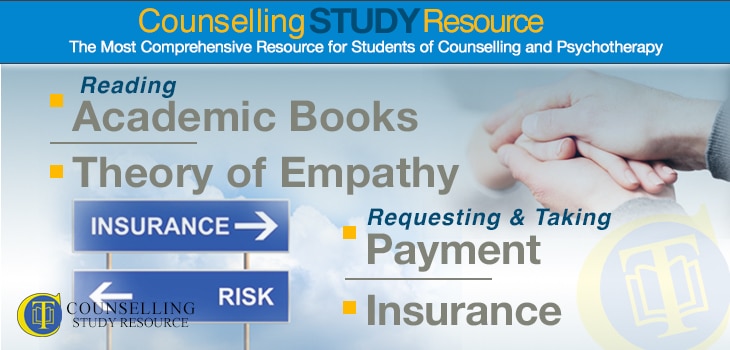Reading Academic Counselling Books
In the Saturday Book Club on the Counselling Tutor Facebook group – which now has nearly 3,000 members – Rory reviews useful text books in plain English. Various publishers have recently donated copies of key books, which members will have the chance to win in competitions.
Rory and Ken give two top tips for reading academic books:
- Don’t try to read these books from start to finish; this can be overwhelming. Start at the index, looking up the specific topic you are studying, and then dip in to read the relevant parts.
- Map out where the important information is within the books, for example using sticky notes and highlighter pens. Do not be afraid to write in your books, if that is helpful to you.
Counselling Student Library
On-demand access to a rich lecture library covering theory, skills, and professional development for counselling students—Mapped to the UK awarding body criteria
“The Student Library has been BRILLIANT, I can’t recommend it enough!
It has been a lifeline in helping me prepare for practice and my first clients. If you’re considering it, go-for-it, it’s absolutely worth it!”
Kelly – Graduated and now in practice.
Theory of Empathy in Counselling
Episode 5 of the Counselling Tutor Podcast covered empathy as a skill; now, Rory looks at the theory of empathy.
The term ’empathy’, applied to counselling and psychotherapy, refers to being in the client’s frame of reference, experiencing the world as they see and feel it. The word is derived from:
- the Greek pathos, meaning ’emotion’, ‘feeling’, ‘suffering’ or ‘pity’
- the German Einfühlung, meaning ‘into feeling’ or ‘in feeling’, coined by the German philosopher Robert Wischer in his doctoral thesis in 1873 to describe the human capacity to enter into the emotional content of art and literature.
British psychologist Edward Bradford Titchener first translated Einfühlung into English – as ’empathy’ – in 1909. Since then, there have been many attempts to define this concept. Particularly well-known is the work of Carl Rogers, who wrote a paper for the Journal of Consulting Psychology in 1957 entitled ‘The Necessary and Sufficient Conditions of Therapeutic Personality Change‘. He describes ’empathy’ as follows (1957, p. 98):
Empathy was also a key focus of the work of US psychologists Charles Truax and Robert Carkhuff, who created the Empathy Scale, available as a free download in Counselling Tutor Podcast episode 8.
Rory explains the four types of empathy: affective, cognitive, receptive and expressed. Empathy has been written about in detail by Dave Mearns and Mick Cooper in their book, Working at Relational Depth in Counselling and Psychotherapy (see ‘Links and Resources’). These authors (2005, p. xii) define ‘relational depth’ as ‘a state of profound contact and engagement between two people, in which each person is fully real with the Other, and able to understand and value the Other’s experiences at a high level’.
Neuroscientific perspectives on empathy have examined brain structure in relation to empathy, with members of the Max Planck Institute identifying the right supramarginal gyrus as key, and mirror neurones also playing an important role.
Regardless of the scientific explanation for empathy, the human experience of being heard, understood and validated is one of the greatest gifts that one person can give another.



